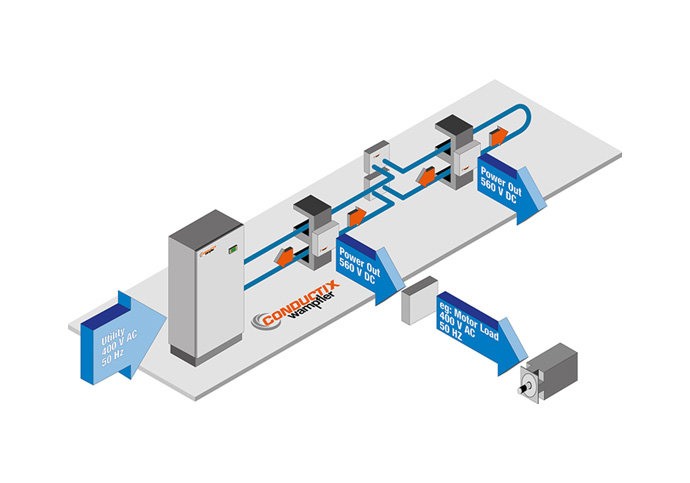Recommend
Remove File
Remove document <span id="remove-document-name"></span> from <span id="remove-cart-name"></span>?
Intralogistics systems play an important role in the automated in-plant transport of materials in factories, distribution centers, parcel services, warehouses, airports, hospitals, and others. These systems increase efficiency, quality, sustainability, and traceability of material flow processes, while reducing waste and inventory buffers. Without them, modern high performance facilities could not function. Electrification components are needed for intralogistic equipment as Automated Guided Vehicles ( AGV), Electric Monorail Systems ( EMS), electric pallet conveyors, rail guided vehicles (RGV), transfer cars, and baggage handling systems, as well as sorters, automated storage and retrieval systems (AS/RS, stacker cranes) and shuttle systems.
Intralogistic systems must be available on demand. If part of the system goes down, processes before and after will stop and the entire facility could shut down. Also, any required maintenance must be done quickly and easily. Energy and data transmission components must adapt to high performance systems, often with complex layouts and operating at high speeds and acceleration. At the same time, they must provide maximum energy efficiency at an acceptable cost. Some systems must meet special technical challenges, such as “clean room” and food processing environments, refrigerated storage, or impure production lines.
Conductix-Wampfler has extensive experience working with intralogistics system OEMs worldwide. From our large product portfolio, we can recommend the optimum solution for individual applications across many different industries without bias towards single technology. With our global presence and local support, we partner closely with OEMs and end-user customers for both small and large scale projects, striving for technical optimization with minimum complexity. Our continuous research & development efforts are geared towards new solutions and continuous improvements of products for this industry.
Inductive Power Transfer (IPT) – powers systems such as AGVs and baggage handling systems. New generations of IPT with state-of-the-art features keep pace with our customers needs.
Conductor Rails – power Electrified Monorail Systems ( EMS), Rail Guided Vehicles (RGV), and baggage handling systems. The SinglePowerLine 0812 and MultiLine 0831, combined with ProShell are ideal for AS/RS stacker cranes. MultiLine 0835 and MultiLine 0365 are the perfect match to power shuttle systems. PEplus for conductor rails works well for electric conveyors of all types, providing safety and simplicity.
Spring-Driven and Motor-Driven Reels – manage cables used to power transfer cars and other moving equipment.
Rubber and Cellular Buffers – are well suited to absorbing energy from machine element impacts.
Jay Radio Remote Controls – offer a safe way of operating or monitoring machines from a distance. The comprehensive range of industrial and safety radio remote controls offers countless solutions to adapt to an extensive number of intralogistic applications.
Application
Crossbelt Sorter
Operator
Wal Mart, Germany
Product
IPT® (Inductive Power Transfer)
Track length
267 m
Number of vehicles
232
Generally the basic function of Rail systems is the same as that of other Inductive Power Transfer systems. But there are some additional or specific aspects to consider.

Because vehicles are usually rail guided here and an elevated installation of the cable is possible it becomes also possible to use E-shaped pickups.
In applications with traveling track segments, i.e. switches in electric monorail systems (EMS), the experience with inductive power transfer can be used to supply such track segments inductively with energy.
Naturally contactless, inductive power transfer systems can also replace other conventional solutions, as cable chains or conductor rails in skillet lines, skids or in transfer cars if there are certain requirements on the solution, for example if voltage arcs at rail ends shall be avoided or if the access for maintenance underneath skillet platforms is very limited, environmental demands on the power transfer solution are high, etc.